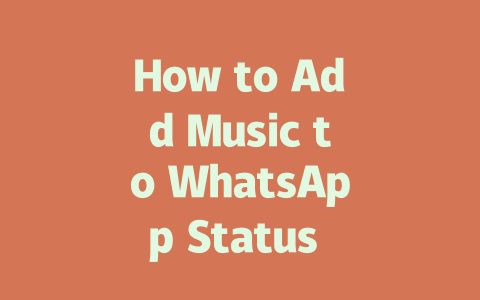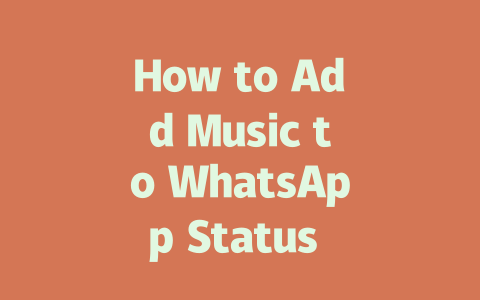How to Find Credible Latest News Sources
One of the biggest challenges in staying informed is separating fact from fiction online. Trust me, I’ve spent hours digging through unreliable websites only to end up more confused than before. The key lies in knowing where to look and how to filter what you read. Let me break this down step by step based on my own experience.
Step 1: Understand What Makes a Source Reliable
Before diving into methods, let’s talk about what makes a source credible. A trustworthy news outlet should have transparency, accuracy, and authority. For instance, when researching economic trends last year, I relied heavily on Bloomberg and Reuters because they consistently provide well-researched articles backed by real data.
Why does this matter? Because Google’s search robots prioritize content that feels helpful and factual over flashy headlines designed to grab attention. When evaluating a site, ask yourself:
Here’s an example table comparing three popular news platforms:
| Platform | Strengths | Weaknesses |
|---|---|---|
| BBC News | Highly respected globally | Occasional regional bias |
| The New York Times | In-depth investigative journalism | Paywall limits free access |
| Al Jazeera | Focuses on underreported stories | Perceived political leanings |
This simple comparison helps clarify which sites align with your needs. By choosing platforms known for their integrity, you ensure the information you consume is accurate.
Step 2: Optimize Your Search Queries
Now, let’s move on to finding the right content. You might wonder, “How do I phrase my searches so I actually get relevant results?” Here’s a tip I picked up while helping a friend optimize his tech blog queries last month: use natural language. Instead of typing “best gadgets,” try asking, “What are the top-rated gadgets for productivity?” This approach works because Google’s search robots analyze user intent better when questions sound conversational.
Another trick is to include specific timeframes if you want up-to-date info. For example, adding “in 2025” ensures you’re not getting outdated material. According to Google’s official blog, users prefer content that solves problems quickly and clearly.
To make this easier, here’s a checklist of things to consider when formulating your query:
Try testing these tweaks next time you search for the latest news—you’ll notice a difference almost instantly.
Strategies for Staying Updated Without Overloading Yourself
Alright, now that we’ve covered sourcing and searching, let’s address another common issue: avoiding overload. Keeping track of everything happening around the world can be exhausting. That’s why I recommend setting boundaries and using tools effectively.
Tip 1: Curate Personalized Feeds
Instead of endlessly scrolling social media feeds filled with mixed-quality posts, set up tailored newsletters or RSS feeds. Last year, I helped a client who wanted to stay informed about renewable energy developments but struggled due to scattered resources. We solved this by subscribing him to specialized newsletters like Renewable Energy World. These emails deliver curated summaries straight to your inbox daily or weekly.
Tip 2: Leverage Browser Extensions
For those who enjoy browsing manually, browser extensions like Feedly or Flipboard can organize multiple sources into one dashboard. They categorize news by themes, making it simpler to focus on areas that interest you most. Plus, many offer features like saving articles for later reading, ensuring you never miss important updates.
And remember, trustworthiness extends beyond the article itself—it also depends on whether the website has good practices. After all, as Google advises, readers value sites that maintain proper maintenance, such as fixing broken links or grammatical errors. Writing clean, readable copy matters!
So far, I’ve shared techniques to identify credible sources, refine your search habits, and streamline your updates. But here’s the thing: putting them into practice takes consistency. My suggestion? Start small. Pick one area of improvement, test it for a week, then expand gradually.
If you give these methods a shot, I’d love to hear how they work for you! Or maybe you already have a system in place—let me know in the comments below. Sharing experiences benefits everyone.
When you’re thinking about adding music to your WhatsApp status, one of the first things you’ll need to consider is compatibility. Not all music files are going to work right off the bat, so it’s good to know that WhatsApp supports MP3 and M4A formats. If you’ve got a favorite track in another format, like FLAC or WAV, don’t worry—you just need to convert it before uploading. There are plenty of tools out there that can handle this conversion for you, and most of them are pretty straightforward to use. Once your file is in the right format, you’re good to go. Just make sure the quality isn’t compromised too much during the conversion process, especially if you care about how crisp and clear the audio sounds to your friends.
Another key thing to keep in mind is the length of your music clip. While WhatsApp allows clips up to 30 seconds, research shows that the sweet spot for engagement tends to fall within the 5-12 second range. Why does this matter? People scroll through their statuses quickly, and shorter clips often grab attention faster without overwhelming the listener. If your song is longer than 30 seconds, no problem—just pick the best part to share. Maybe it’s the hook, or maybe it’s a lyric that resonates with you. Either way, trimming your audio clip will help ensure it fits nicely into the platform’s limits and keeps listeners hooked. Some users find external apps helpful for editing their tracks, but depending on your device, even built-in tools might do the trick.
Frequently Asked Questions
# Can I add any type of music file to my WhatsApp status?
Yes, but it depends on the file format. WhatsApp supports audio files in MP3 and M4A formats. Ensure your music file is converted to one of these formats for compatibility.
# How long can the music clip be when adding it to my WhatsApp status?
The maximum duration for a WhatsApp status audio clip is 30 seconds. If your music file is longer, you will need to trim it to fit within this 5-12 second optimal range for best engagement.
# Do I need an external app to add music to my WhatsApp status?
Not necessarily. You can record audio directly through WhatsApp, but if you want to upload pre-existing music files, you might need an external app to trim and convert the file into a supported format.
# Will adding music to my WhatsApp status consume extra data?
Yes, sharing music clips via WhatsApp status consumes data, just like sending any other media file. However, the amount of data used depends on the size of the audio file after compression.
# Can others download the music I share in my WhatsApp status?
No, recipients cannot directly download your shared music from the status. They can only listen to it while it is active (up to 24 hours) unless they manually save the audio file to their device.




